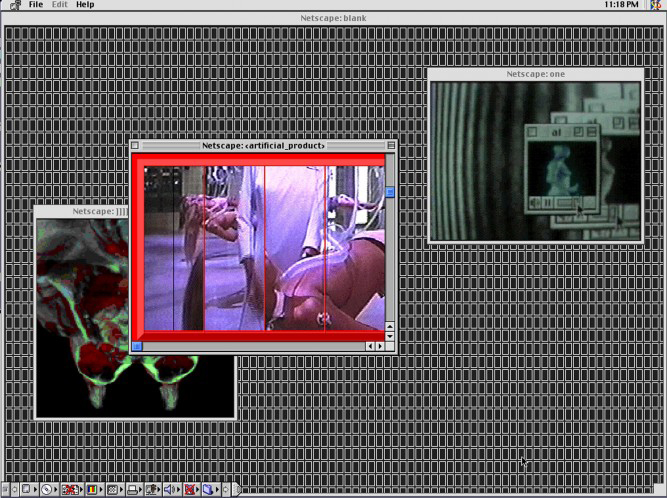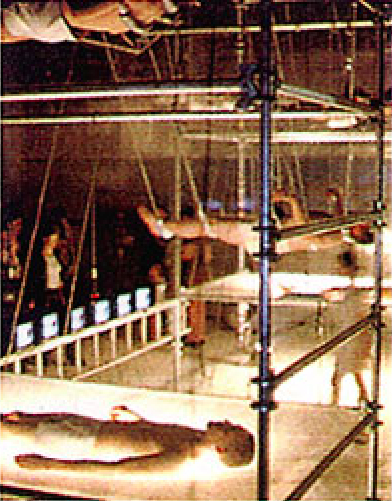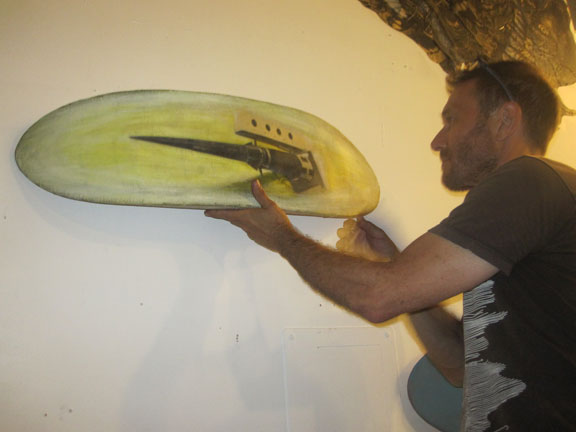1. Who are the other members of fakeshop.
2. Why do they call themselves fakeshop?
3. What is their background? Does their background influence the outcome of the project?
I came across onto Josephine Bosma website. She is a journalist and an art critic living and working at Amsterdam and she focuses on art in the context of the internet. An interview between her and fakeshop members were posted on her website.
Prema Muthy is one of the founder besides Jeff Gompertz. She is one of the founder of the online performance. Fakeshop is known for their performance in which poetic mix of both online and offline environment.

Other Fakeshop members includes Jeff Gompertz (founder), Eugene Thacker and Ricardo Dominguez. Prema is an artist living in New York. She did not create artwork until she moved to New York from Texas. She began working with an inventor who developed algorithms for large format digital printing systems. At the same time, she also started performing with an art group called 'Floating Point Unit' which how she met Jeff Gompertz and Vlasto Mikic. It was during that time that she started making art through the use of computers. With the group, she started to work with CUseeme as remote participation device. Cuseeme is a popular internet video conferencing tool developed by Cornell University. They broadcast from installations and would do it in abandoned sites. They used CUseeme to instigate an artistic element into the mundane environment where people get to play along with what they were doing. They would chat with collaborators around the world and ask where the installation was built. They would also ask people to chat 'stream of consciousness', 'exquisite corpse' style on topics that ranged from bio piracy and genetic copyright.
"They would respond back and they would create this very beautiful hypertextual narratives, almost 'exquisite corpse' style. The surrealist game where they would draw something, fold the paper and someone would add to it unknowingly and it would create this work of art. We are using chat in the same way." - Prema Murthy
Unfortunately Floating Point only lasted about two years. Gompertz and Prema then founded Fakeshop together. Fakeshop(1997-2000) was an art performance warehouse space located at 90N 11th Street in Williamsburg, Brooklyn. Their performance incorporate CuSeeme technology, live video mixes and sound were created at the space and broadcast live every weekend for 3 years. Frequent collaborators include Ricardo Dominguez, Diane Ludin and Bruno Ricard.


Prema claimed that the online audience has developed fakeshop.
"The last project we did, it was called 'human use of human beings', based on a Norbert Weiner book about cybernetics from around 1950, had an interesting by product. After the last show was over the installation was torn down, but we kept the computers running with CUseeme on it. We were using a reflector site at the university of Japan so a lot of the participants were Asian (also from around the world of course). It was interesting what happened. They would go back, they would refer to our website, the URL, they would take texts from it, texts Eugene Thacker had written, copy them and go back to CUseeme and past it in. There were discussions, people would respond to that... To me that level of participation, to actually switch browsers, go to the website and then come back to CUseeme and instigate their own conversations based on texts we had written: I had never seen that before. It was going on for weeks after our installation, in all languages. It was really exciting for me to see the audience being international and being so motivated." - Prema Murthy
Eugene Thacker is a writer, theorist and artist. Most of his works are collaborated with the New York based net performance group Fakeshop. Eugene works revolves around bio tech, science fiction, experimental literature, art and science.

Eugene's background is more in critical theory and literary theory. He was involved in experimental literature community. The intersection with science for him is recent. He was interested in the body and the relationship of the body to different technologies. The web actually inspired him to start working as an artist.
" I really came to think of me as an 'artist' when I was working with the web and I was doing not just text, but html, image, video, sound, exploring all these different things." -Eugene Thacker
His writing is connected to his artwork as he have written alot about new media and science fiction.
Upon further research on Fake Shop, I came across another interview between Josephine Bosma and Jeff Gompertz. It was about their group name, Fakeshop. Gompertz. The name fakeshop was lifted from a line in a book of Alain Robbe Grillet. He was Gompertz favourite writer. He also loves to 're-do scenes from movies'.
One of the most important questions raised during our presentation was, "Does their background influence the outcome of the project"?
Well, I would rather say the projects have influenced Prema and Eugene to become an artist and helped them to expand more creativity. Before the group was formed, they were not artist or they do not have an artistic background. However for Gompertz, his background did influence the outcome of the project because he was an installation artist. Therefore, he knew about arts and have an artistic background. I also think that CUseeme software have inspired them to work on internet art and broadcast performance art through the net.
sources :
- http://www.josephinebosma.com/web/node/73
- http://commtechlab.msu.edu/sites/letsnet/frames/bigideas/b9/b9u3l2.html
- http://www.josephinebosma.com/web/node/75
- http://www.premamurthy.net/#/fakeshop/
- http://nettime.org/Lists-Archives/nettime-l-9712/msg00026.html



















